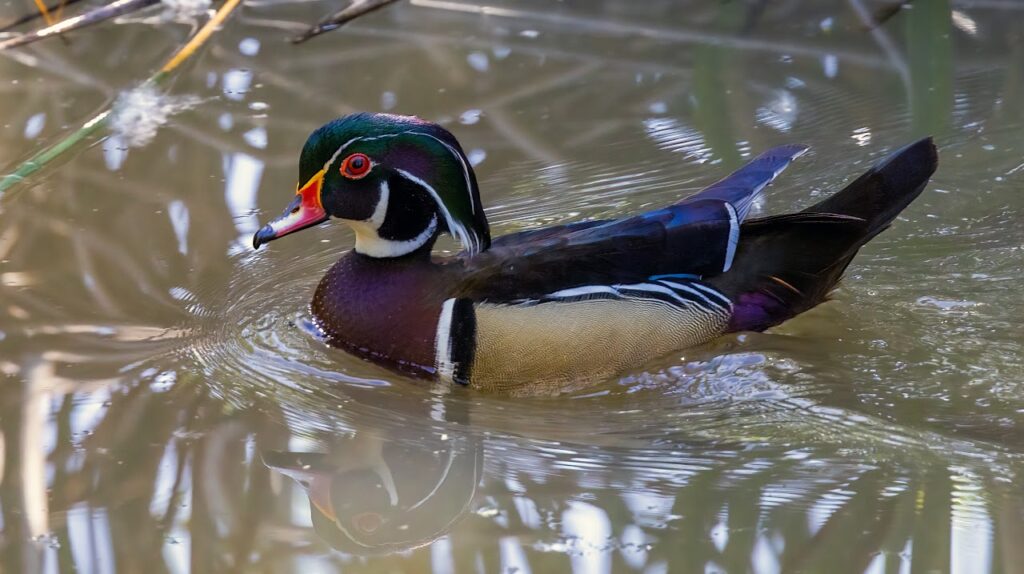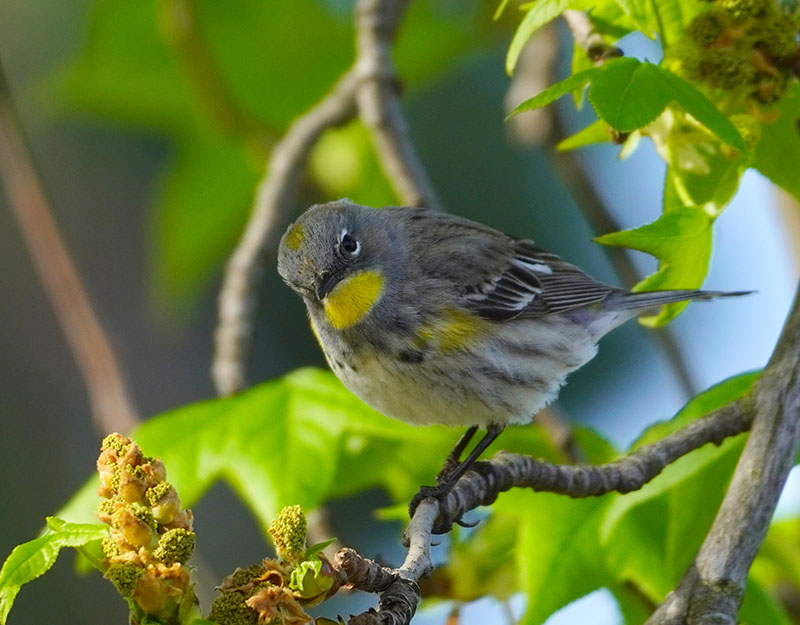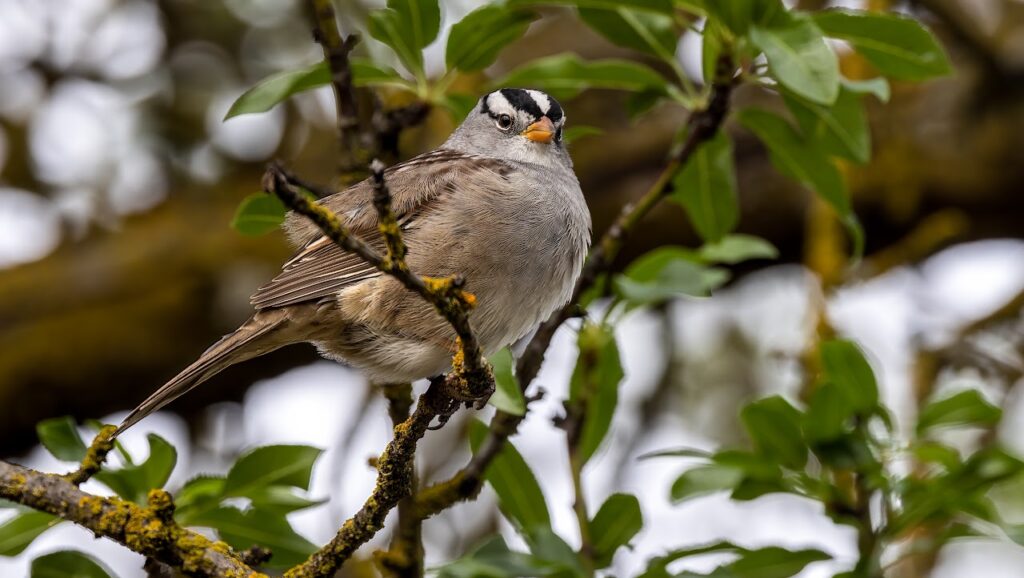When Jim Gain started his “Learn 100 Valley Birds” series, we immediately thought of one our earliest posts, “How to Really Learn the Birds.” We thought a few changes might make it more relevant to Jim’s exciting project. “How to Really Learn the Birds (Updated)” doesn’t contain anything new; rather, we’ve shifted the focus just a bit toward Jim’s excellent series, making it even more local. ed.
The therapeutic benefits of nature are among the greatest antidotes to stress of all kinds, and in these trying times, getting to know our bird friends can be a welcome tonic. We’re posting here in tandem with Jim Gain’s latest in the “Learn 100 Valley Birds” series, the Northern Flicker.
The key to enjoying local bird life lies in narrowing your focus. The San Joaquin Valley hosts well over three-hundred bird species and the list continues to grow. It’s a daunting task to learn them all, especially when you realize that for many species males, females and young are distinctly different. Fortunately, you don’t need to learn even half the local birds to enjoy our winged friends.
Learning the birds can be simplified by following one rule: Learn the common birds around you.
Jim Gain has simplified the task for Valley nature lovers with his “Learn 100 Valley Birds” series. We’re proud to publish the series here, and you can also view it, along with others of Jim’s fine nature studies, at Reflections of the Natural World.

Learning the common birds involves understanding bird distribution and status. Distribution means where and status means when. For example, some birds are found more often in parks and gardens, others in ponds and wetlands. That’s the “where” of the equation.
“Status” refers to whether the birds are migrants passing through, year-round residents, winter or summer visitors, common, uncommon or rare. Focusing on the common birds around you enables you to learn the birds much faster and builds a base of knowledge you can use to learn even more birds.
To find out the status and distribution of birds in your area, you need a checklist of local birds. The Stanislaus Audubon Society has a checklist of Stanislaus County birds here (be sure to see the sidebar that takes you to photos and other useful locations). This list — another of Jim Gain’s superb productions — includes most of the species that can be found in the Valley as a whole.
Unless you want to try searching for birds online, you’ll want a field guide, Field guides include range maps that show where and when the birds occur. They can give you a good idea of the status of the birds in your area.
Once equipped with a checklist and field guide, you should have a pair of binoculars. While not absolutely essential, binoculars enhance the experience of seeing birds. Close-up views reveal how beautiful the birds really are and enable the viewer to focus on important field marks. There’s a good guide to binoculars here, and you can find used bargains on ebay.
Field marks are characteristics that help identify birds. For example, the Black Phoebe, a common bird in the Northern San Joaquin Valley, has a black hood and vest with a white lower belly. These features are best seen with binoculars. The male Wood Duck, another common bird, is easily identified by his colorful plumage, but binoculars reveal stunning subtle detail and make viewing the bird more rewarding.

In the 1930’s, Roger Tory Peterson almost single-handedly popularized bird watching by authoring field guides that featured the Peterson Method for identifying birds. The Peterson Method simplifies bird identification by focusing on the one or two key field marks that distinguish one species from another.
While not the only way to learn the birds, the Peterson Method can expedite learning, especially for beginners. It’s easy to learn the Peterson Method, even from one of Peterson’s older field guides; many are available cheap in used bookstores. National Geographic and Sibley Guides are also widely available and exceptionally well done.
Once equipped with a local checklist and field guide, remember to use the Target Method to learn the birds. The Target Method simply means that one goes out looking for a particular bird or birds.
For example, most Valley residents know the Scrub Jay, but not by its proper name. They call it the “Blue Jay.” The beginning birder can study the differences between the “Blue Jay,” a common resident of the east, and our own Scrub Jay, and then go out and confirm the common Scrub Jay by its field marks. See Jim Gain’s Scrub Jay post here.
Using the Target Method enables you to avoid one of the beginning birder’s common mistakes, leafing frantically through a bird book while in the field. This behavior causes two problems. One, it takes your eyes off the bird. Two, it produces frustration when you realize how many different species and plumages are represented in the typical field guide. The sum of these problems is usually a mistaken ID, or a quick exit from birding.
Once you’ve targeted and identified a few birds, you begin to recognize the various groups, or “taxons”: sparrows, finches, jays, blackbirds, warblers, doves, etc. Recognizing the groups (“taxons”) enables you to find birds much easier in the field guide, where they are arranged in taxonomic order.

Just remember, the rule is, “When in the field, keep your eyes on the bird, not in the guide.” Study the bird closely, take notes when possible, or even a photograph. Use the guide once the bird has flown (and they always fly, some too soon).
The best way to begin with the Target Method is to search for a familiar bird, say the aforementioned Scrub Jay — locate it, confirm the field marks, and put it on your own checklist of birds. Keeping a checklist helps the learning process.
While practicing the target method, you’ll see birds you don’t know. You’ll see the common birds again and again, and begin recognizing them even when you don’t know their names. Most will have been in Jim’s series by the time it’s done. Meanwhile, you can target many of the birds he’s already listed.
Here’s a short list of year-round residents, easily found in many of our parks and gardens: Black Phoebe, American Robin, Northern Mockingbird, Oak Titmouse, Nuttall’s Woodpecker, Anna’s Hummingbird, Rufous-sided Towhee, and Red-Shouldered Hawk — all these birds are included on the Stanislaus County checklist, which you can download and use to record your own records. Once you’ve found a few target birds, you’ll soon know twenty or thirty species as welcome friends.
When you’ve learned a few local birds, you’ll look forward to the changing seasons.
Fall brings winter residents, including Yellow-rumped Warblers, and White-crowned and Golden-crowned Sparrows. You may even begin to look forward to the challenge of distinguishing between the American Goldfinch and Lesser Goldfinch, two more of the species in Jim’s series.
Getting outdoors is good anytime, and it’s even better when local birds become our familiar friends.

The right wing birds are destroying…
Oh wait. Birds. Yeah, birds are cool.
I believe in a Creator. The one and only God. He made birds. He designed them, to have magnificent colored feathers, eyes, beaks, and abilities. He was thinking of pleasing mankind with such spectacular beauty. He made this Earth with all His splendor, for the birds, and all other inhabitants.
He created the ecosystems and environs they make home. He created the plant life and insect life they survive with. Birds reveal the love and sense of majesty God has. We can even see God’s sense of humor when we watch His creators fly through the sky, frolic in the water, and traverse the land.
Thank you father, God, for your gifts on Earth, such as birds and men like Jim Gain and Eric Caine.